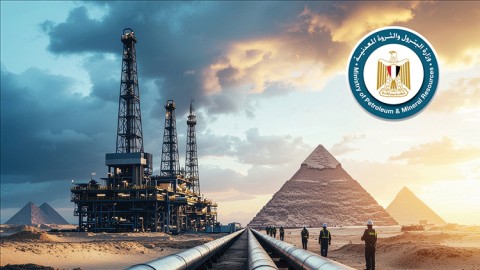The industrial development and societal practices of the 20th century have undoubtedly had a disturbing impact on the environment of planet Earth. The wasteful use of natural resources, lack of energy sources development, and improper disposal of energy by-products poses an adverse impact on the entire ecosystem and human health. The causes may be diverse and numerous, but the problems created by the production and consumption of fossil fuels in general and petroleum in particular, represent some of the greatest concerns shared by the entire international community.
The global community will rely heavily on oil and gas supplies for the foreseeable future. The world’s primary energy consumption at the end of the 20th century stood at nearly 8000 million tons of oil equivalent (mmtoe). Oil and gas represented 63% of the world’s energy supply, with coal providing 27%, nuclear energy 7%, and hydro-electric 3%. The challenge is to meet world energy demands, whilst minimizing the adverse impact on the environment by conforming to current good practices.
Environmental regulation is critical to address the environmental impacts of exploration and production (E&P) in the oil and gas industry, which arise largely because of the methods employed to drill wells. As a well is drilled, drill cuttings as well as fragments of rock and mud from the hole are brought to the surface along with drilling fluids and mud used to lubricate and cool the drill bit, as well as various chemical compounds. Drilling deep and horizontal wells can produce prodigious amounts of this waste, which is generally stored in surface pits or tanks before being disposed of at or near the drilling site. Environmental regulations ensure that companies dispose this waste in an environmentally friendly way, and that complete disposal of waste and rehabilitation of the environment surrounding the well is accomplished by the time drilling is completed. In addition, environmental regulations require the operator company, as the owner, to monitor the entire life cycle of an operating well to guarantee the well is properly plugged and abandoned when it has reached the end of its life. The United States has created an effective legal framework for enforcing environmental regulations on its oil and gas industry that many countries around the world can use as a model.
The Resource Conservation and Recovery Act (RCRA) regulates solid and hazardous waste and underground storage tanks. The objective of the RCRA and other similar initiatives was to aid governments in creating their own waste disposal schemes.
Drilling waste is exempt from regulation under the RCRA. However, the RCRA does regulate temporary underground hydrocarbon storage tanks located at or near a well site and other waste associated with drilling operations (e.g., empty drums, solvents used to clean drums or trucks, waste associated with painting and sandblasting, and other solvents, chemicals, and acids used at or around drill sites).
The Clean Water Act (CWA) is the primary law governing water pollution, passed in an effort to protect the environmental integrity of waterways. The CWA does not cover drinking water, which is covered primarily by the Safe Drinking Water Act (SDWA), but it does strictly regulate what types of waste can be discharged into a waterway whether that be a wetland, lake, river, estuary, or stream. The CWA also covers the discharge of waste at any shoreline or other land if there is potential for that waste to drain or seep into a waterway or wetland.
The Safe Drinking Water Act (SDWA) is the premier piece of legislation allowing the government to regulate drinking water. The SDWA seeks to promote healthy drinking water that is free of harmful amounts of pollutants. It created the Underground Injection Control program, which regulates wastewater disposal and flow back into old/inactive wells or wastewater disposal wells resulting from the drilling process. Essentially, the SDWA regulates all oil and gas wells that involve an injection of liquids or gas, either to enhance recovery or to dispose of drilling waste, brine, or water recovered during production. The SDWA does not, however, regulate wells that are solely used for the production of oil and gas without the aid of any ongoing fluid injection to increase pressure.
The Clean Air Act (CAA) regulates major source and minor source entities that emit any of 188 separate air pollutants and is the preeminent law regulating toxic pollutants released into the air. Major source polluters are individual entities that either have the potential to emit at least 10 tons of a single toxic air pollutant per year or have the potential to emit 25 tons of two or more air pollutants during any given year. Major source polluters (such as power plants) are individually regulated and must install emission control devices that drastically reduce the amount of pollutants released into the atmosphere. The standard for these control devices is deemed to be the maximum achievable control technology. Minor source polluters emit less than the major source limits on a per-installation basis. These polluters are not required to install emission control devices unless an aggregated number of minor source polluters would collectively produce enough toxic air pollution to qualify as an aggregated major source polluter.
The Oil Pollution Act (OPA) requires oil and gas companies to implement a plan to prevent oil spills, as well as a detailed containment and cleanup plan should an oil spill occur. It also contains certain education requirements and limits the ability of certain vessels that have spilled large amounts of oil from traveling. The OPA creates a strict liability standard for any party responsible for oil spills, meaning that the spill alone rather than any showing of negligence or gross negligence is enough to incur liability. It also channels liability to certain entities involved in the exploration and production process. For instance, in offshore exploration and production activities, the holder of the drilling permit is legally responsible under the OPA for any oil spill, even if another party contributed to causing that spill. A party that is strictly liable under the OPA may bring a contribution action against a party that is not strictly liable under the OPA, but any such litigation is irrelevant for the purposes of government enforcement of the OPA.
The Toxic Substances Control Act (TSCA) allows the regulation of chemicals that pose an “unreasonable risk to health or to the environment” and also permits the regulation of new entrants into the chemical marketplace. The TSCA has not traditionally been used to regulate the oil and gas industry.
In Egypt, the government had issued environmental Law 4/1994, which regulates everything related to environmental hazards, pollutants, and protected areas. All oil and gas companies have to follow this law to avoid sanctions, penalties, or fines. Contract termination is also a possibility if their activities result in severe environmental damage.








